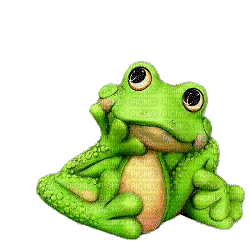Post by glowtoad on Oct 4, 2020 22:47:20 GMT
Consisting of more than 5,000 species, frogs and toads are among the most diverse groups of vertebrates. However, populations of certain species have been declining dramatically since the 1950s. More than one third of species are believed to be threatened with extinction and more than 120 species are suspected to be extinct since the 1980s. Habitat loss is a significant cause of population decline, as are pollutants, the introduction of non-indigenous predators/competitors and emerging infectious diseases. Habitat conversion poses the most serious threat to toads. Many populations have been eliminated by urban development. Converting woodlands to pastures or plowed fields destroys toad habitat. Clearcutting forests is also harmful to toad habitat.
Many toads are killed each year by automobiles. Roadway mortality will increase as human populations continue to increase within the species’ habitat and as the habitat continues to be dissected by more roads. Road construction further isolates populations and disrupts or prevents the movement of individual toads between populations. This movement of toads is necessary to maintain gene flow, and thus genetic diversity, and to supplement small or declining local populations.
Other threats that often appear in conjunction with the factors outlined above include drought and the presence of fire ants, an unwelcome species from Brazil. Fire ants have been observed preying on toadlets as they leave their breeding pond. Fire ants thrive in open, sunny areas where the soil has been disturbed and woody vegetation uprooted, as in agricultural fields and urban areas. Protecting large forested areas is one of the most effective deterrents to fire ants.
Toads are also threatened by the inhumane pet trade. Every year, a variety of sources provides millions of animals to the wild and exotic pet trade. Animals are captured from their native habitat and transported to various countries to be sold as 'pets'. Others are surplus animals from zoos or their offspring. Backyard breeders also supply exotic animals. The sellers of these animals often disregard state or local laws regulating private possession of exotics and the dangers, difficulties, physical and physiological needs of the animals they peddle. The suffering of the animals in the hands of unqualified and hapless buyers appears to be of no concern in the lucrative exotic pet trade.

Many toads are killed each year by automobiles. Roadway mortality will increase as human populations continue to increase within the species’ habitat and as the habitat continues to be dissected by more roads. Road construction further isolates populations and disrupts or prevents the movement of individual toads between populations. This movement of toads is necessary to maintain gene flow, and thus genetic diversity, and to supplement small or declining local populations.
Other threats that often appear in conjunction with the factors outlined above include drought and the presence of fire ants, an unwelcome species from Brazil. Fire ants have been observed preying on toadlets as they leave their breeding pond. Fire ants thrive in open, sunny areas where the soil has been disturbed and woody vegetation uprooted, as in agricultural fields and urban areas. Protecting large forested areas is one of the most effective deterrents to fire ants.
Toads are also threatened by the inhumane pet trade. Every year, a variety of sources provides millions of animals to the wild and exotic pet trade. Animals are captured from their native habitat and transported to various countries to be sold as 'pets'. Others are surplus animals from zoos or their offspring. Backyard breeders also supply exotic animals. The sellers of these animals often disregard state or local laws regulating private possession of exotics and the dangers, difficulties, physical and physiological needs of the animals they peddle. The suffering of the animals in the hands of unqualified and hapless buyers appears to be of no concern in the lucrative exotic pet trade.


